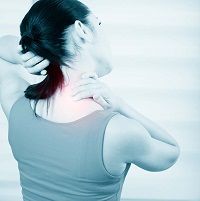Neck-Specific Exercises Associated with Pain Reduction for Whiplash-Associated Disorders
General physical activity is often part of the prescription for pain patients. But a new secondary analysis published in The European Journal of Pain shows that for patients with whiplash-associated disorders, neck-specific exercises can be effective and well-tolerated as well.

General physical activity is often part of the prescription for pain patients. But a new secondary analysis published in The European Journal of Pain shows that for patients with whiplash-associated disorders (WAD), neck-specific exercises (NSE) can be effective and well-tolerated as well.
The analysis compared a control group of volunteers with WAD who were given a prescription of physical activity (PPA) and a second group given a prescription of NSE. Patients in the latter group had up to 5.3 times higher odds of disability reduction and 3.9 times higher odds of pain reduction compared to those in the physical activity group.
Participation in a neck-specific exercise intervention, in contrast to general physical activity, was the only factor that consistently indicated higher odds of treatment success. These results support the prescription of NSE for individuals with chronic WAD.
The findings in the analysis mirror a study published this past April in The Clinical Journal of Pain.In that study, the proportion of patients reaching substantial reduction in pain (at least 50% reduction) was more evident (P<0.01) in two neck-specific exercises groups (29% to 48% who experienced less pain) compared with the PPA (only 5% of whom experienced less pain). At 6 months, 39% to 44% of the patients in the two neck-specific groups and 28% in the PPA group reported substantial pain reduction. Reduction of disability was also larger in the 2 neck-specific exercise groups at both 3 and 6 months (P<0.02). Self-efficacy was only improved in the NSE group without a behavioral approach (P=0.02).
These findings are particularly important given that nearly 50% of patients suffering from WAD report experiencing pain for a year or more after the precipitating incident, and because effective treatments for WAD have proven elusive. The study authors noted that, “…It is unlikely that any one treatment will suit all, but in this study there are clear indications that NSE with, or without a behavioral approach, may be appropriate for a number of these individuals.”
To date, only a handful of randomized clinical trials have tested the efficacy of NSE in patients suffering from whiplash. But the evidence provided by this study and the analysis in the European Journal of Pain is likely to fuel future studies to determine the long-term benefit of NSE.